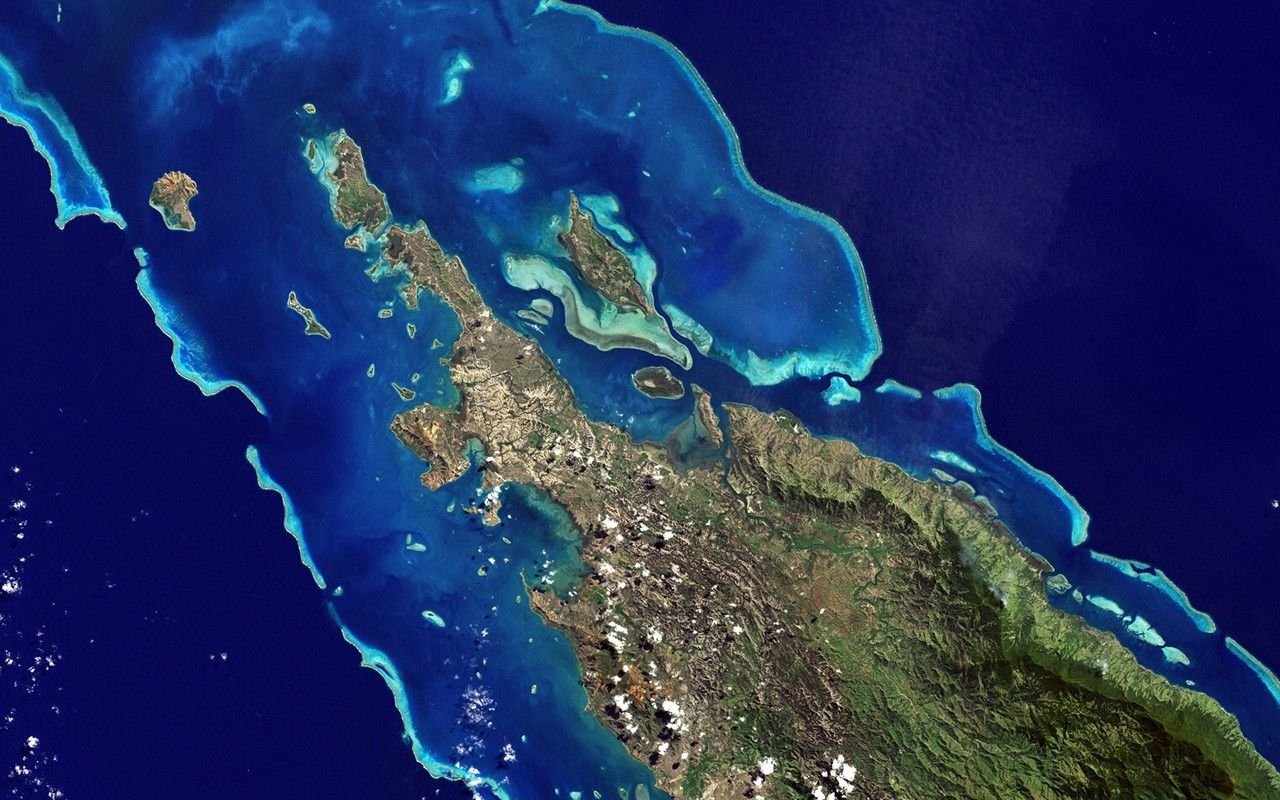Located in the center of the Iranian plateau, the Dasht-e Kavir, or Great Salt Desert, is the 24th largest desert on the planet. From the ground, the desolate sand plains and adjacent mountain range are imposing and beautiful. From above you get a completely different perspective. The US Geological Survey-operated Landsat 7 satellite captured a stunning image of the Dasht-e Kavir from above in 2000 (seen below). The Landsat 7 satellite operated from 1999 to 2024.
Credit: NASA/USGS Landsat 7; NASA Earth Observatory
The Landsat 7 satellite isn’t the only craft capturing images beautiful images of our planet from above. Other International Space Station satellites and crews have also documented Earth, taking images everywhere from Georgia, US, to the islands of New Caledonia in the South Pacific.

Unlike other blackwater rivers, the Suwannee retains its inky color throughout its entire 250-mile journey to the sea. When the river eventually meets the Gulf of Mexico along Florida’s Big Bend — that part of the coast where the state’s panhandle curves toward the peninsula — the dark water acts as a tracer, revealing where the river water mixes with the sea.
That mixing was seen on February 20, 2015, when the Operational Land Imager on NASA’s Landsat 8 satellite captured this image.
Credit: NASA Earth Observatory image by Dr. Alice Alonso, using Landsat satellite data from the US Geological Survey. Caption adapted from Laura Rocchio, NASA Landsat Science Outreach.

This image was acquired on August 4, 2002 by the Landsat 7 satellite.
Credit: USGS/NASA/Landsat 7

Credit: Expedition 26 crew member aboard the International Space Station, courtesy of NASA

On July 18, 2018, the Operational land imager (OLI) on Landsat 8 acquired a natural-color image of a swirling green phytoplankton bloom in the Gulf of Finland, part of the Baltic Sea. Notice how the phytoplankton follow the edges of a vortex; it is possible that this ocean vortex is pumping up nutrients from the depths.
Credit: NASA Earth Observatory images by Joshua Stevens and Lauren Dauphin, using Landsat data from the US Geological Survey and MODIS data from LANCE/EOSDIS Rapid Response

Credit: NASA

The image, taken while the International Space Station was over West Africa near the Senegal-Mali border, shows a fully formed anvil cloud with numerous smaller cumulonimbus towers rising near it.
Credit: NASA

This image was taken on July 18, 2017 by the Operational Land Imager on the Landsat 8 satellite.
Credit: Source: NASA/USGS Landsat 8; Norman Kuring, GSFC

Credit: NASA/US Geological Survey/Landsat-7/Goddard Space Flight Center

Credit: NASA/GSFC/METI/ERSDAC/JAROS and the US-Japan ASTER Science Team

Credit: USGS/NASA/Landsat 7

Credit: USGS/NASA/Landsat 7

Credit: NASA/USGS Landsat 7 satellite; NASA Earth Observatory














Leave a Reply